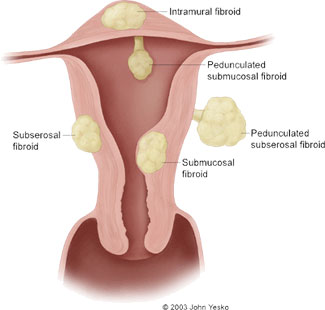Mapping a Treatment Plan for Uterine Fibroid Symptoms
The best way to treat uterine fibroids is to get rid of them completely. This can be done through surgery, which can be either an open surgery or a minimally invasive laparoscopic surgery. If the fibroids are small, they can also be treated with medication or by freezing them.
There are many different treatments for uterine fibroid. The most common treatment is surgery, which can be performed laparoscopically or through a large incision in the abdomen. Other treatments include hormonal therapy, radiation therapy, and embolization.
Treating Uterine Fibroid Without Surgery | Dr. Vikash C S
What is the Best Treatment for Uterine Fibroids?
There is no one-size-fits-all answer to this question, as the best treatment for uterine fibroids will vary depending on the individual woman’s situation. However, some common treatments for uterine fibroids include medication (such as hormonal therapy or birth control pills), surgery (such as myomectomy or hysterectomy), and/or embolization (which cuts off the blood supply to the fibroid). In many cases, a combination of these treatments may be necessary in order to achieve the best possible outcome.
If you are suffering from uterine fibroids, it is important to consult with your doctor in order to determine which treatment option(s) are right for you.
How Do I Treat Fibroid Without Surgery?
There are a number of ways to treat fibroids without surgery. The most common is medication, which can be used to shrink the size of the fibroid(s). There are also several types of interventional radiology procedures that can be used, such as uterine artery embolization (UAE) and focused ultrasound ablation (FUS).
In some cases, a hysterectomy (surgical removal of the uterus) may be recommended if the fibroids are large or causing significant symptoms.
What is the Most Common Fibroid Treatment?
There are a number of different fibroid treatments available, but the most common is surgery. This can be either open surgery, which involves making an incision in the abdomen, or laparoscopic surgery, which is done through small incisions in the abdominal wall. Other less common treatments include medication or uterine artery embolization, where the blood supply to the fibroids is cut off.
What is the Fastest Way to Cure Fibroids?
There is no one definitive answer to this question as fibroids can vary greatly in size and location, making some much easier to treat than others. However, there are a few general treatment options that can be used to shrink or remove fibroids quickly. These include medication, surgery, and embolization.
Medication is often the first line of defense against fibroids and can be taken orally or injected directly into the uterus. Surgery is another option for treating fibroids and can be done laparoscopically or hysteroscopically. Finally, embolization is a minimally invasive procedure that cuts off the blood supply to the fibroid, causing it to shrink or die.

Credit: www.nm.org
Best Treatment for Fibroids
The best treatment for fibroids depends on the severity of the symptoms. If the fibroids are small and not causing any problems, no treatment is necessary. If the fibroids are large or causing pain or bleeding, various treatments are available.
These include medication, surgery, and/or embolization.
Tablets to Shrink Fibroids
Tablets to Shrink Fibroids: There are many different types of medication that can be used to help shrink fibroids. One type of medication is called a GnRH agonist, which works by stopping the production of estrogen. This can cause the fibroids to shrink.
Another type of medication is called an antiprogestin, which blocks the effects of progesterone. This can also help shrink fibroids.
Which Size of Fibroid is Dangerous
There is no definitive answer to this question as it depends on a number of factors. In general, however, larger fibroids are more likely to cause problems than smaller ones. This is because they are more likely to press on surrounding organs or blood vessels, which can lead to pain, bleeding, or other complications.
If you have any concerns about your fibroids, be sure to speak with your doctor.
Read more: Hamdard University Main Campus
Conclusion
In conclusion, this blog post discusses the various treatment options available for uterine fibroid. It is important to consult with a medical professional to determine the best course of treatment for your individual case.




